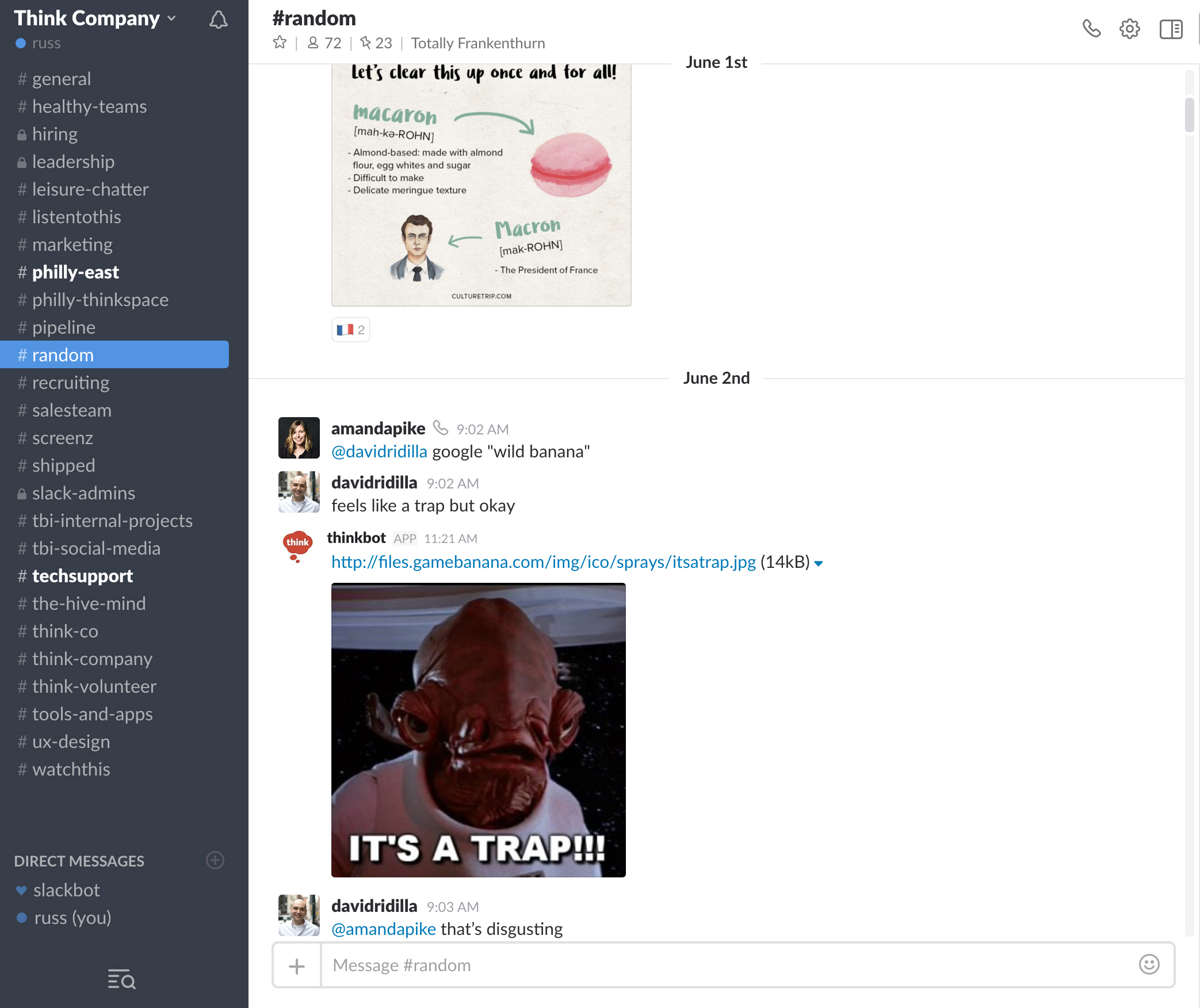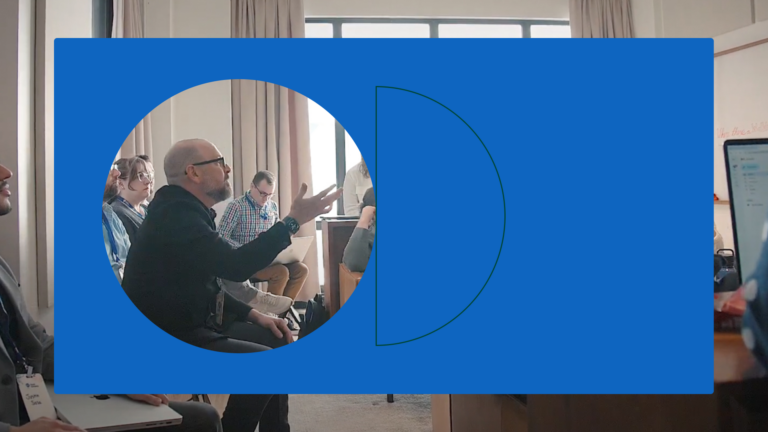Using design thinking for leadership development

It’s very common for leaders in the consulting world to prescribe treatment for the problems and challenges of others—and be fully qualified and effective in doing so—while continuing to fly by the seat of their pants when it comes to their own teams and/or organizations.
Since it’s the expressed job of consultants to provide expert advice (that you’d therefore assume they’re implementing themselves), the dichotomy here is especially glaring, but in reality, this scenario is present regardless of industry, product, or service.
“Do as I say, not as I do.” Consultants to clients. Managers to reports. Elected officials to constituents. Parents to children. It’s everywhere. It bothers some people more than others. It bothers me a lot. I believe history shows it’s incongruous with truly great leadership, and if you’re reading this you’re likely not interested in being a mediocre leader, let alone a terrible one.
Resist preprogrammed pressure
When I first found myself in a situation of “being in charge” where there were some significant stakes, I started to feel some primordial preprogramming kick in. I now needed to have all the answers! To shoot from the hip! To make executive-level decisions at the drop of a hat with no second opinions and no self-doubt! Sound familiar? The interesting thing is that those impulses actually come from a place of insecurity, and the animalistic belief that acting otherwise (make yourself look bigger, don’t get eaten) will save you from harm. In the end, though, it won’t, and as a leader, it has the added weight of potentially harming those looking to you for direction. Great leaders don’t do that.
How then do we break this cycle and quiet the lizard brain?
I recognized pretty quickly that I was falling into a common pattern of “circling the wagons”: pulling things in closer, putting up more of a front, more of a wall. It just didn’t sit right, because a) it’s really not my personality and it’s not how I want to move through this life or interact with others, and b) it’s contrary to the fundamental tenets of my craft: design. This inauthenticity (poison to great leadership) led me to try to apply what I knew to be a reliable and repeatable formula for success (the design process), to leadership.
What is the role of leadership in design thinking?
We all know there are many characteristics of a good leader. In the design and technology industry, a leader who adopts and champions design thinking as a part of their leadership style and philosophy opens the door to creative and innovative ideas that lead to elegant solutions—that show results. Design thinking also empowers team members to look outside the box, push boundaries, and learn along the way.
The first concept I leaned on when adopting design thinking into my leadership style comes from branding giant Marty Neumeier—who talks about the huge gap (in terms of both approach and results) between deciding the way forward and designing the way forward. He frames it in terms of project work, but I actually think it’s helpful to look at leadership as just a long, complex project with regularly changing goals, measures, constraints, and players.
At times of impasse it’s been helpful to remind myself that any professional success I’ve ever enjoyed has come as a direct result of having the discipline to take a beat and step through the design process. It works for a reason, you can apply it to anything (and it doesn’t have to take a long time, you just have to commit to each step), and it’ll continue to serve you well if you stay true to it.
What is this magic formula? Essentially, every type of designer more or less follows a universal process that is some variation of the ADDIE model:
ANALYZE, as genuinely and objectively as possible, the target audience for your solution (this includes everyone who will be affected by it, including those implementing, and often both internal and external stakeholders); their characteristics, wants, needs, pain points, workflows, workarounds, and environments
DESIGN, with objective data from your analysis as the driver for decisions, the most ideal product/service/process considering all of those aforementioned parties; each detail should map back to a data point that justifies its inclusion and attributes
DEVELOP the solution so that it can be practically implemented against any constraints that may be present; economic, social, geographic, technical, time, skill, etc.
IMPLEMENT the solution in true, real-world context with all products/services/processes/people present and performing according to the prescribed design
EVALUATE, also as humbly and objectively as possible, the degree to which your solution addresses the problem(s)/challenge(s) you set out to conquer; rinse and repeat
Why does this process work so well? For these reasons: it’s intentional, evidence-based, and user-centric. That last one requires reiteration, as it’s the piece that often gets thrown out when in a hurry or under stress. It’s not designer-centric. Remember that “there’s no “I” in design”–meaning that as you’re working through a problem, if you start to notice an abundance of statements that begin with “I,” you’re putting yourself at the center of it and getting off track. You can take this foundational tenet and swap “design” for “leadership” with powerful results: there’s no “I” in (great) leadership. I don’t get too jazzed when I hear leaders start a lot of sentences with “I.” But when they start them with “we,” they’ve got my attention.
How design thinking can impact your decision-making
The tools and technology we use to perform our work and collaborate amongst ourselves and with clients are heavily scrutinized in terms of efficiency, security, stability, portability, versatility, and a host of other adjectives leading eventually to cost and ROI.
A few years ago we were collaborating using a combination of early versions of the Basecamp products and G Suite, along with Yammer for more real-time, threaded discussion. Some folks on the team (hint: our “target audience,” on the receiving end of leadership decisions we make) started lobbying for this new tool called Slack.
I’ll confess that I was a prominent voice of opposition because: a) Yammer seemed to have devolved into mostly a place of lobbing jokes around, hadn’t shown any great usefulness (for us) in supporting our actual work, and had pretty poor overall adoption and engagement—so why would we want what seemed like “Yammer on steroids”?; b) it seemed like its main purpose would be to turbo charge the amount, ubiquity, and various flavors of goofing around (which I love to do, of course, but realize has a tipping point); and c) it didn’t align with my (then) personal workflows or preferences.
We were in a time of significant stress and transition as we were opening our first Philly office and had an understandable focus on scaling our work, processes, and culture across multiple offices. In other words, we had a LOT of decisions to make in a compressed time period—so my knee-jerk reaction was, “no to that… what’s next on the agenda?”
This serves to illustrate that it’s easy for any of us, even design professionals (sigh), to innocently throw the tried-and-true out the window in service of “knocking stuff down.” Luckily, I got pushback from the room: “If we’re wrestling with how to maintain our culture across multiple studios, this could be the key.” “Folks are always getting work done while they blow off steam, this is no different.” “How about we follow our process on this one?”
So, we followed the steps above. We analyzed the unmet need and use cases proposed by the “lobbyists,” understanding their specific workflows, and also some interaction models that were the norm for folks 15 years my junior and not necessarily for me. We designed how this tool might work in tandem with our other tools, which ones it might supersede, and what exactly would (and could) take place there based on client agreements, access rules, etc. We developed guidelines and our own custom bot, then we implemented a test instance of it. We then evaluated what happened, played with settings and processes, gathered feedback, and most importantly, let the needs of our crew drive decision making. This process has not stopped, as we continue to optimize our usage and configure the tool and our internal processes accordingly.

Long story short, this tool that at one point I was ready to write off in a quick checking-off of an agenda item, is now our most important asset in maintaining connectivity, continuity, and culture across our team even as they’re in different studios, onsite at client locations, and on the road. We gladly pay for company-wide unrestricted licenses. The heart and soul of who we are as an organization is contained within the public channels for company announcements, random thoughts, what we’re watching and listening to, the dedicated channels for collaboration across each work discipline, the “hive mind” for quick and mind-blowing feedback from the smartest people we know, and private channels for specific projects and client collaboration.
Could we have succeeded without it? Yes. Would that have been the ideal solution for our team? Not even close. Would it have seemed like a decision made by leadership in a vacuum that didn’t take into account the people most affected by it? You betcha, and rightly so.
Applying design thinking to your leadership style
If you look back at the leaders and success stories you’ve admired and wish to replicate in some way, you’ll find design thinking present even if it’s not called out by name (universal principles of design, driving intended outcomes, have been present for long before they were codified). At the end of the day, what it all boils down to is this: at the heart of all great design is empathy, respect, and the desire to move something toward its ideal state—ultimately making the world a better place, even if just for a small subset of people.
That is worth restating, in full, after again making our swap: at the heart of all great leadership is empathy, respect, and the desire to move something toward its ideal state—ultimately making the world a better place, even if just for a small subset of people.
Facing some heavy change management challenges? There’s your mantra, and a high-level formula to help you get there.



